The 5th National Bonsai Exhibition featured some beautiful deciduous trees. As the exhibit was held in the first part of September, visitors could see trees with fall color, trees with vibrant green leaves, and trees with no leaves at all.
I especially appreciated the trees that suggested the season, as was the case of the winner for Finest Deciduous Bonsai, a European White Birch.
Finest Deciduous Bonsai – European White Birch
The birch had good white bark – the feature for which the variety is best known – and leaves that were just starting to yellow.
The Japanese maple below is another beautiful specimen. The transition from surface roots to lower trunk is dramatic, and the trunk has no major scars.
Japanese maple
One of the most densely ramified deciduous trees in the exhibit was a corkbark Chinese elm. I’ve watched the tree develop over many years and have enjoyed seeing it improve with time.
Corkbark elm
Below is my Korean hornbeam. I removed the leaves as fall color in my area is often more brown than yellow, and I happen to prefer the tree’s silhouette without foliage. It’s displayed with a chojubai quince.
Korean hornbeam
One of the more impressive deciduous bonsai in the exhibition was the root over rock trident maple below. The branch density is fantastic and the trunk is great, if hidden behind the foliage.
Root over rock trident maple
Here’s another impressive trident maple, displayed with a small juniper. It was one of my favorite three-point displays in the exhibit.
Trident maple and juniper
If there were a prize for most interesting trunk it might go to the tree below.
Buttonwood – note dragon’s head at the crest of the container
Colin Lewis’ well-known Colorado Blue spruce made an appearance in an equally well-known pot by Dan Barton.
Colorado Blue Spruce
Pot detail
I liked the scroll alternative that accompanied an old Engelmann spruce. Note the great age of the deadwood.
Engelmann Spruce
The award for Finest Natural Bonsai went to a small Scots pine displayed on a slab.
Scots pine
The awards were selected by a panel of three judges – Minoru Akiyama from Japan, Enrique Castano from Mexico, and Tony Tickle from the UK. While evaluating the trees in the exhibit, the judges found they needed a new category to recognize what they thought was the most creative contribution to the event. The result was a spontaneous award presented to Creighton Bostrom for two displays featuring procumbens junipers.
The first is a group planting of seven trees that emerge from floating clumps of moss supported by pedestals – one for each tree. A variety of mossy components accented the junipers.
Finest Creative Bonsai – Procumbens juniper
Accent
Creighton’s next entry was a crowd favorite. A procumbens juniper in a naturalistic container was framed by a wavy, layered wood sculpture into which, I imagine, went a lot of work. It was a treat to see it in person – I hope it will show up in future exhibits so those who missed the exhibit will get a chance to see it.
Procumbens juniper in layered wood sculpture
For high-quality photos of all of the trees on display, pre-order the show book from International Bonsai. It’s on sale for a limited time so order a copy or two now.
Tune in next week for a look at some of the shohin bonsai displays.
Display Program at Puget Sound Bonsai Association
This coming Monday, September 26, I’ll be presenting on bonsai display for the Puget Sound Bonsai Association. If you’re in the Seattle area, stop by to learn what you can do to improve your bonsai displays. We’ll cover two and three point display, stand selection, and display conventions at contemporary Japanese exhibits. With these tips in mind, we’ll then set up practice displays with available trees, stands and accents.
I look forward to seeing you there!
Subscribe to Bonsai Tonight
New Posts Delivered Every Tuesday and Friday
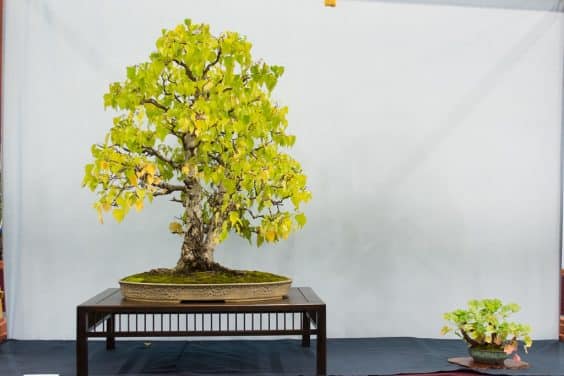
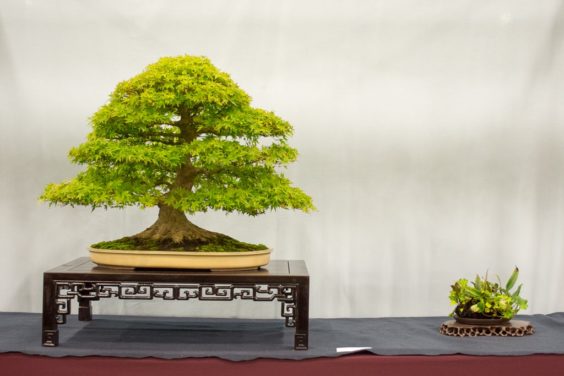
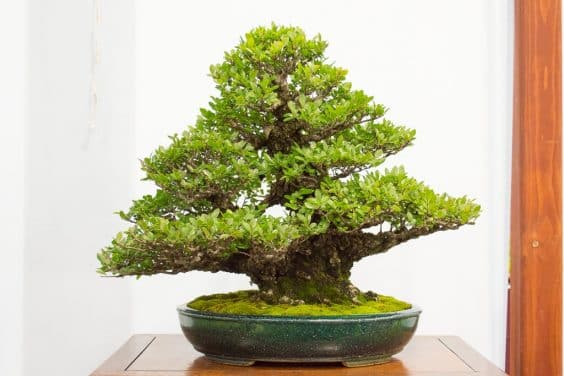

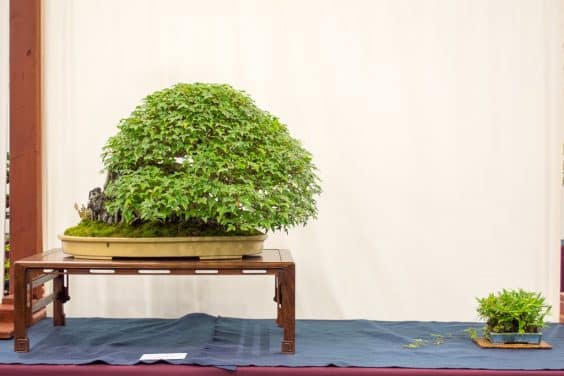
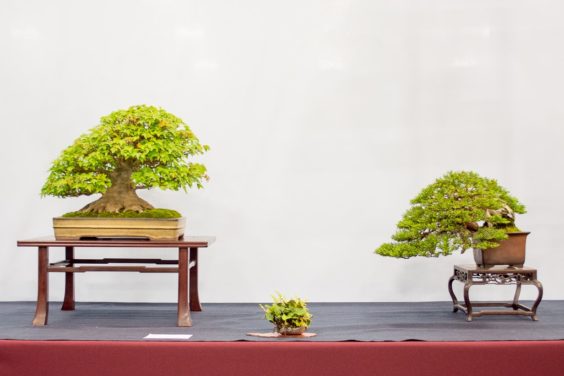
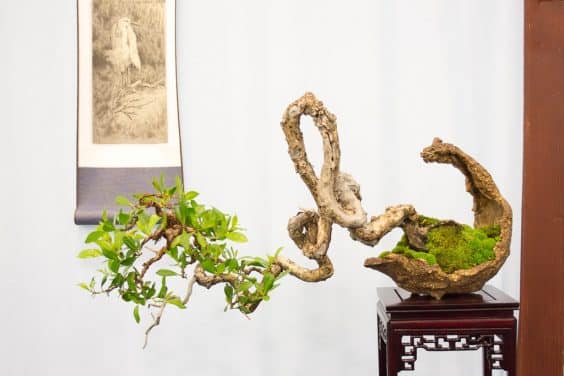
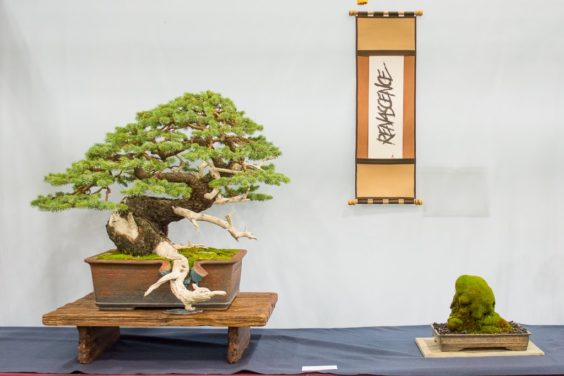
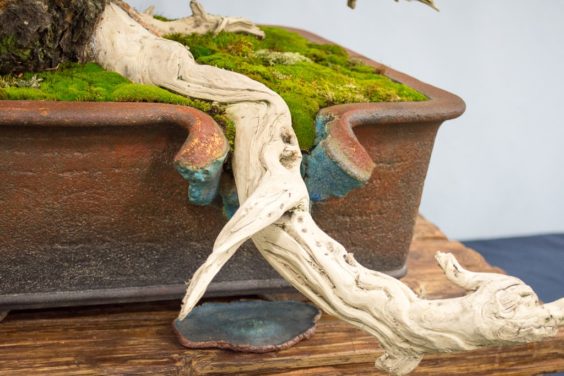
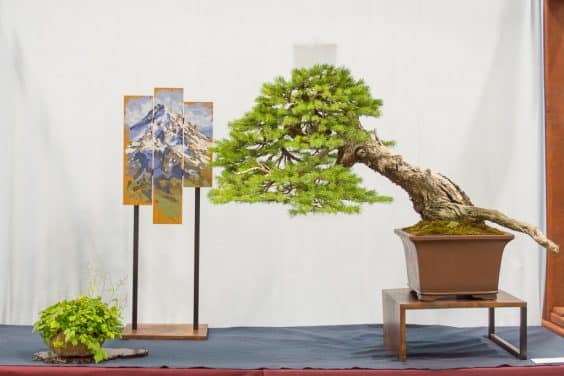


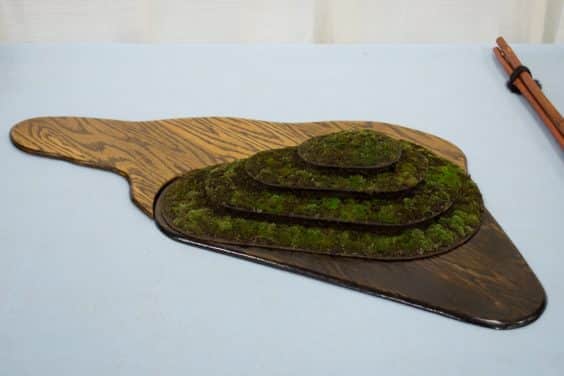
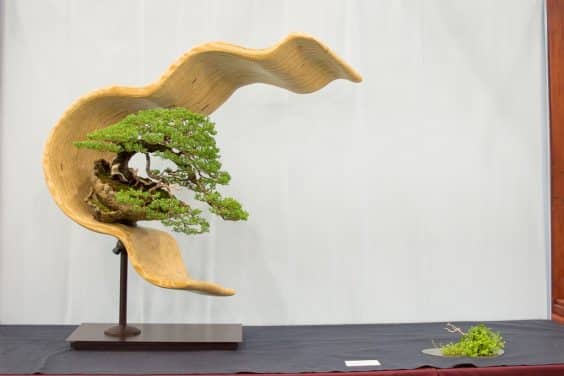
Lynn says
Thanks for the photos. You de-foliated your hornbeam for the show. My shohin hornbeam lost all leaves 4 weeks ago in 95 to 100 degree heat even though it was shaded and well watered. Produced about 15 huge leaves and buds that are opening all over tree. I’m in zone7a.
How will you over-winter your tree? I’m concerned for mine. Thanks, Lynn
Jonas Dupuich says
Very good question Lynn. I’m in 10a so my winters are mild – no need for extra care. I’m keeping my tree in a shady spot and watching the water carefully. I don’t want it too wet or too dry at this point and am watering once or twice a week at this point. In your situation, I’d want to care for the tree the way I would in normal circumstances. I’d watch the water carefully to maintain the current leaves and let them turn and fall off naturally when it cools down. In winter, I’d want to keep the tree just above freezing if possible. If that’s not possible, I’d want to keep it just below freezing, but not lower than 28-30 degrees.
Would love to hear from others who live in cold areas and have gone through this before.
Lucy Davenport says
Friends,
I live in Zone 7a also. I keep all my outdoor bonsai in large drawers filled with pumice to the rim of the pot in conditions below 30’F. No loss of trees last winter, in temperatures down to 10’F for a week solid–pretty cold for here! Portland OR
Pumice is readily available here, in this volcanic environment. Sand would do equally to provide insulation to the roots in other areas. Drainage is essential here where rain can be daily deluges. Supplemental water is necessary if we have prolonged dry spells, even in winter.